10 Vietnamese destinations CNN recommended in 2019
Thu, 28 Nov 2019 14:42:00 | Print | Email Share:
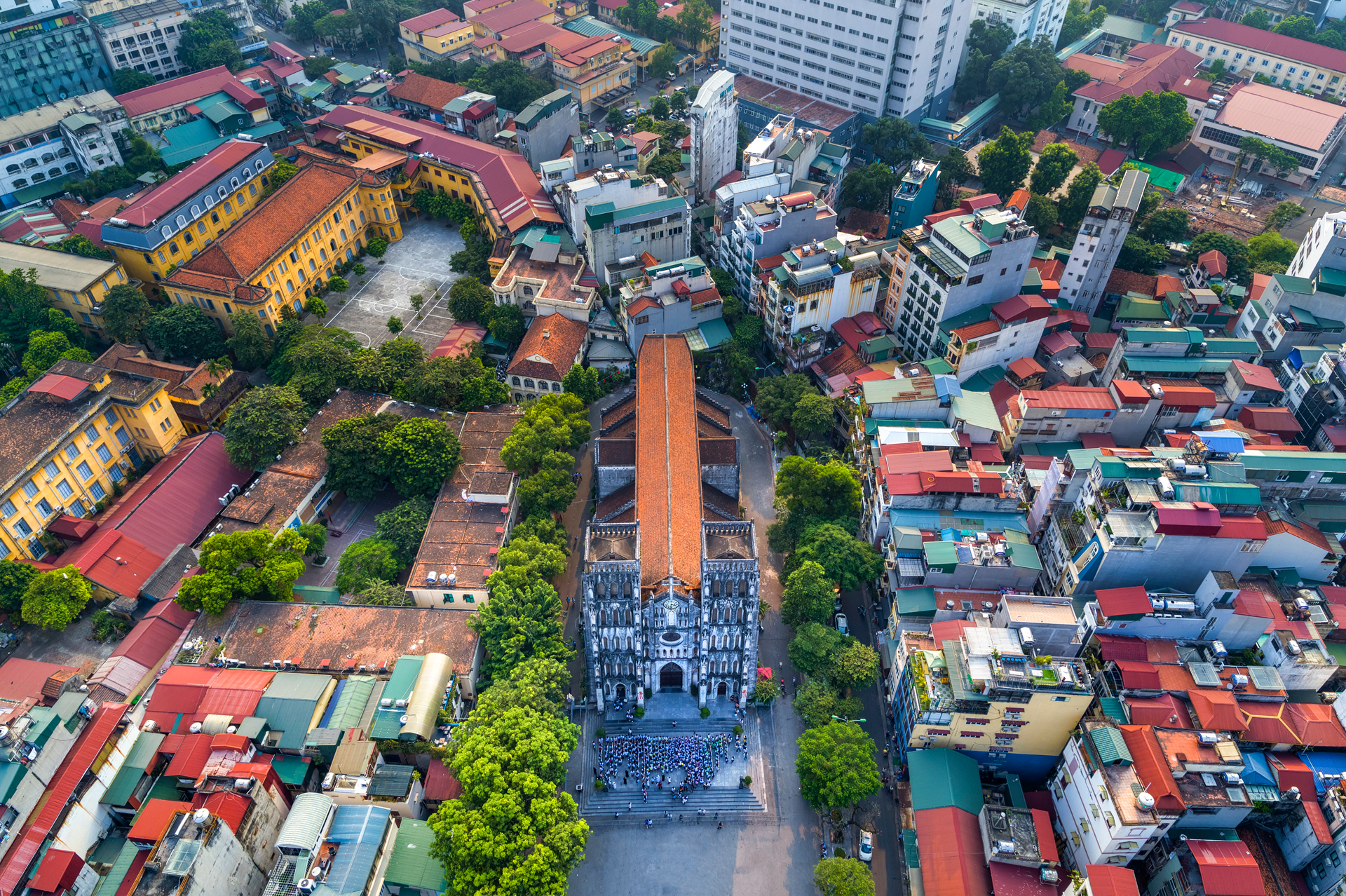
With the end of the year approaching let us take a look back at 10 attractions in Vietnam cable news network CNN said it liked.
Quang Ba flower market
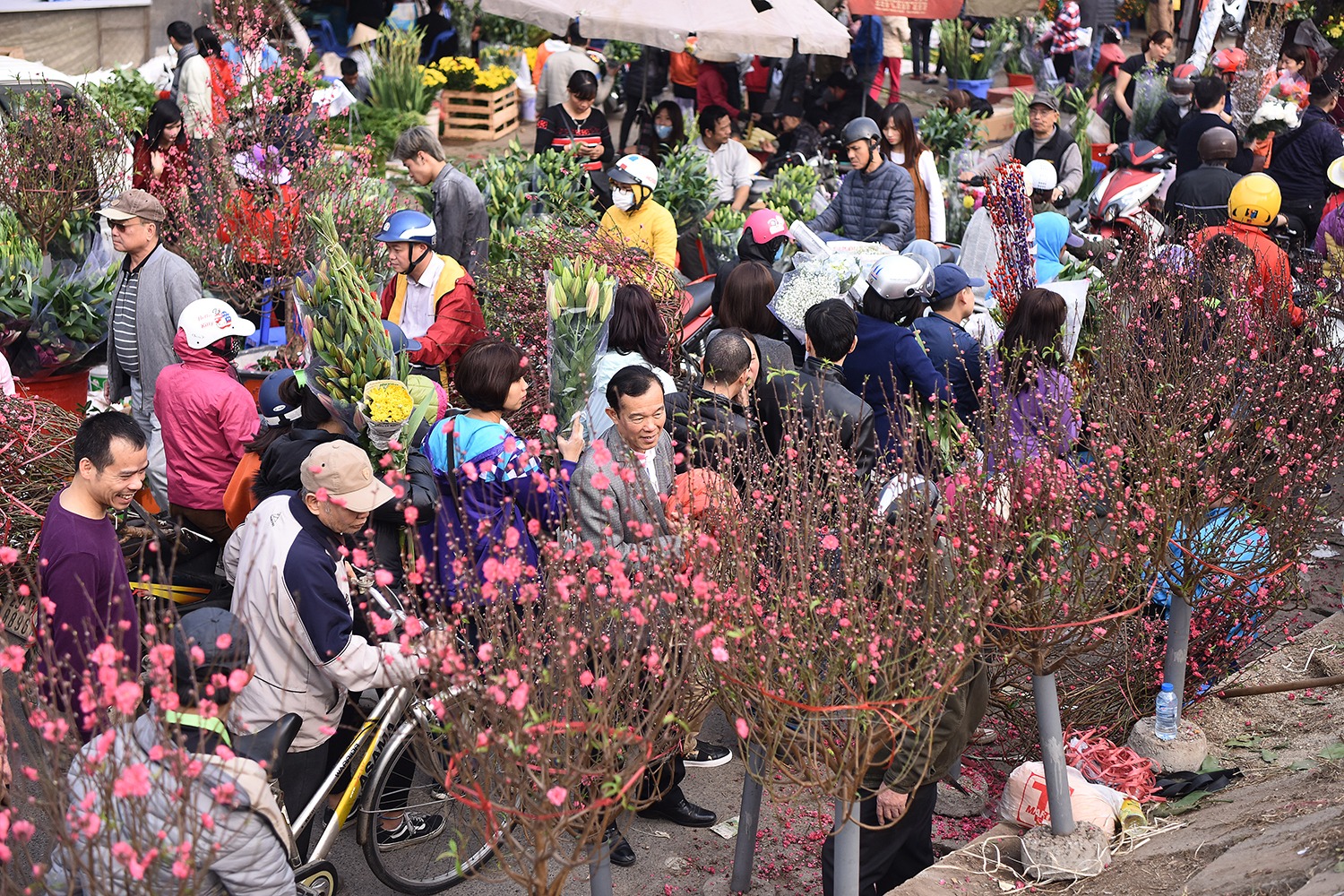
People shop at Hanoi's Quang Ba flower market. Photo by VnExpress/Giang Huy.
In January CNN listed Hanoi’s Quang Ba flower market among 15 world's best places to celebrate the Lunar New Year, or Tet, Vietnam’s biggest and most important holiday.
The market on Au Co Street in Tay Ho District, which opens at 3 a.m. every day, is the largest and oldest flower market in the city and works at frenetic pace before Tet as shoppers hurriedly buy large quantities of fresh flowers.
Vietnamese have an old tradition of offering fresh flowers to deities and ancestors during the holiday to pray for luck and peace in the new year. Every house is filled with flowers. Shoppers look for the most eye-catching bouquets. Peach blossoms are nearly a must in Hanoi, while bright yellow ochna is the southern staple.
Hoi An
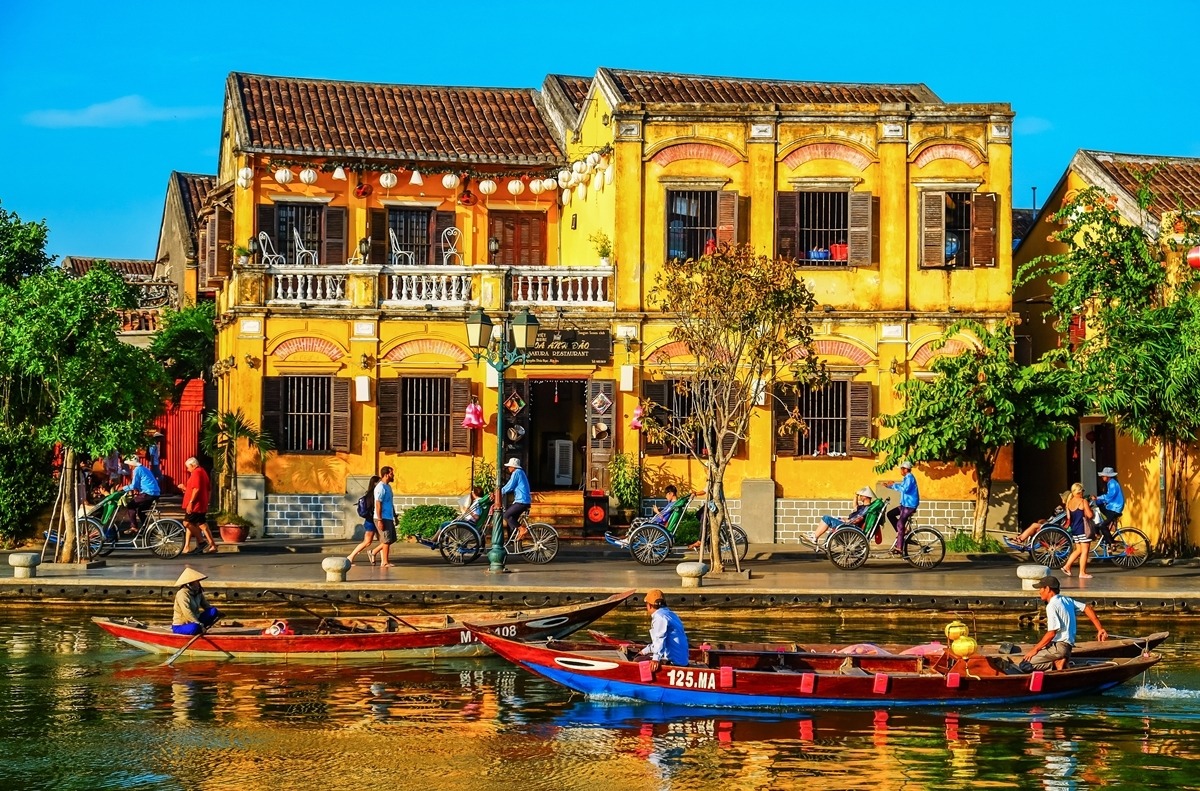
Hoi An ancient town is a popular tourist destination in central Vietnam.
Photo by Shutterstock/Hong Anh.
In February the old town of Hoi An was named among the 13 most romantic places in the world to be in on Valentine’s Day, February 14.
Hoi An, which lies along the Thu Bon River around 30 kilometers south of Da Nang City, casts a spell over visitors with its slow pace of life and an old world charm. This renders the place romantic for couples to enjoy each other’s company and strengthen the bonds of affection, CNN says.
Quang Phu Cau incense village
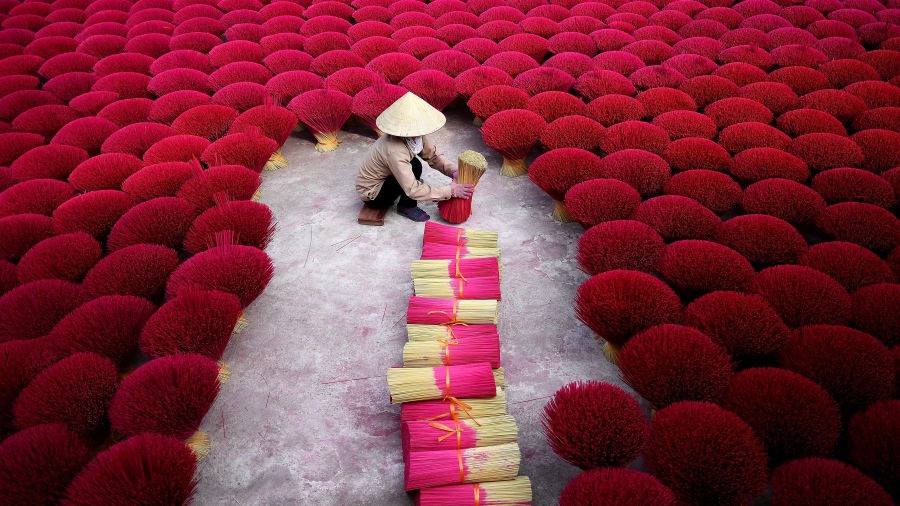
A woman collects incense sticks in a courtyard in Quang Phu Cau Village
on the outskirts of Hanoi. Photo by AFP/ Manan Vatsyayana.
In March the image of a woman collecting incense sticks in a courtyard in Quang Phu Cau Village on the outskirts of Hanoi was voted among the 100 best global travel photographs by CNN editors.
The village has more than 300 households engaged in making incense for more than a century. It is at its busiest in the run-up to Tet because the majority of the population lights incense at home and pagodas.
Quang Phu Cau's products are consumed not only in Vietnam but also in India, China, Malaysia, and other countries. On average, the village uses around 200 tons of materials and produces 50 tons of incense a month.
Linh Ung-Bai But Pagoda
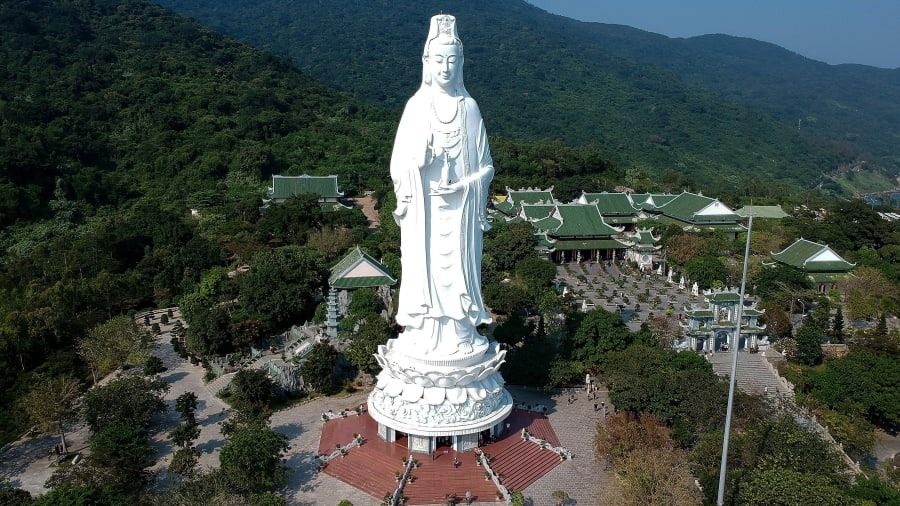
The 67m tall Guanyin Statue on Son Tra Peninsula in the central city of Da Nang.
Photo by AFP.
A photo of the 67-meter white Guanyin statue at Linh Ung-Bai But Pagoda on Son Tra Peninsula, 10 kilometers from Da Nang's center, was named among the 100 best travel photos of 2019 in the March listing by CNN.
Legend has it that a Buddha idol drifted downstream to the region and ran aground on a sandy embankment in the 19th century during the reign of King Minh Mang, the second emperor of the Nguyen Dynasty, Vietnam’s last royal family (1802-1945).
Local fishermen thought it was a good omen and built a small pagoda to worship the statue. During the Vietnam War, the pagoda and the Buddha statue were almost totally destroyed.
The sandbank where the statue drifted was then named Bai But (Buddha's Sanctuary) and the Linh Ung Pagoda was built there. Construction of the pagoda started in 2004 and took six years. Linh Ung Pagoda is considered a symbol of the rise of Vietnamese Buddhism in the 21st century.
Ha Long Bay
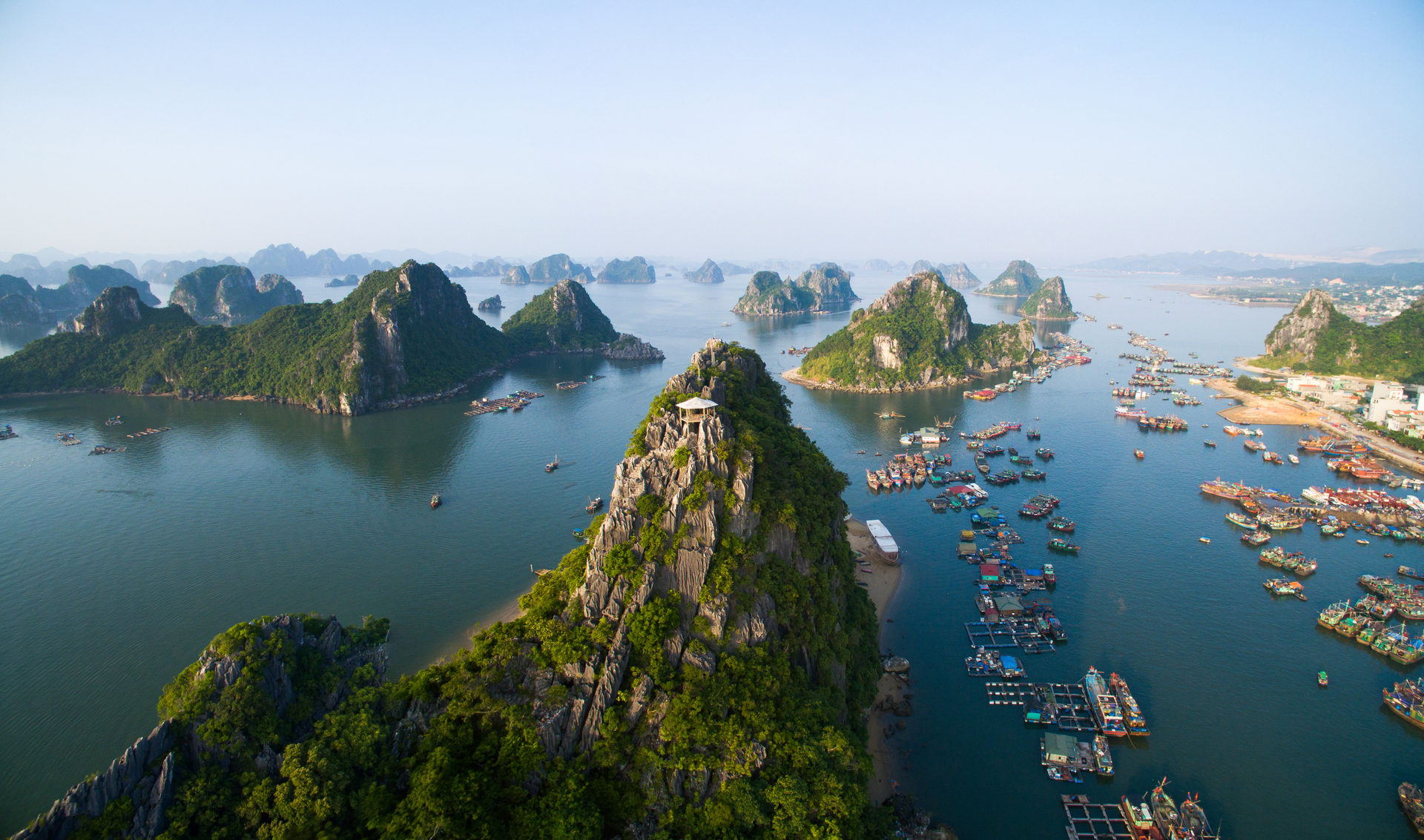
An aerial view of Ha Long Bay, a UNESCO world heritage site.
Photo by Shutterstock/Hoang Minh.
In April Ha Long Bay was one of three natural wonders in Asia to break into CNN's list of 25 most beautiful places on the planet. The other two are Zhangjiajie National Forest Park in China and El Nido in the Philippines.
Ha Long Bay, four hours to the east of Hanoi by road, was recognized as a world heritage site in 1994 by UNESCO. It was also voted among the world’s seven new natural wonders by Swiss organization New Open World in 2011.
Major infrastructure improvements have made it easier for foreigners to visit the world-famous bay.
Last December Van Don International Airport, 50 kilometers from Ha Long Bay and Vietnam's first private airport, opened. A new expressway connecting the Hanoi-Hai Phong Expressway with Ha Long, opened to traffic last September, reducing the Hanoi-Ha Long commute by 50 km to 130 km.
Ho Chi Minh City
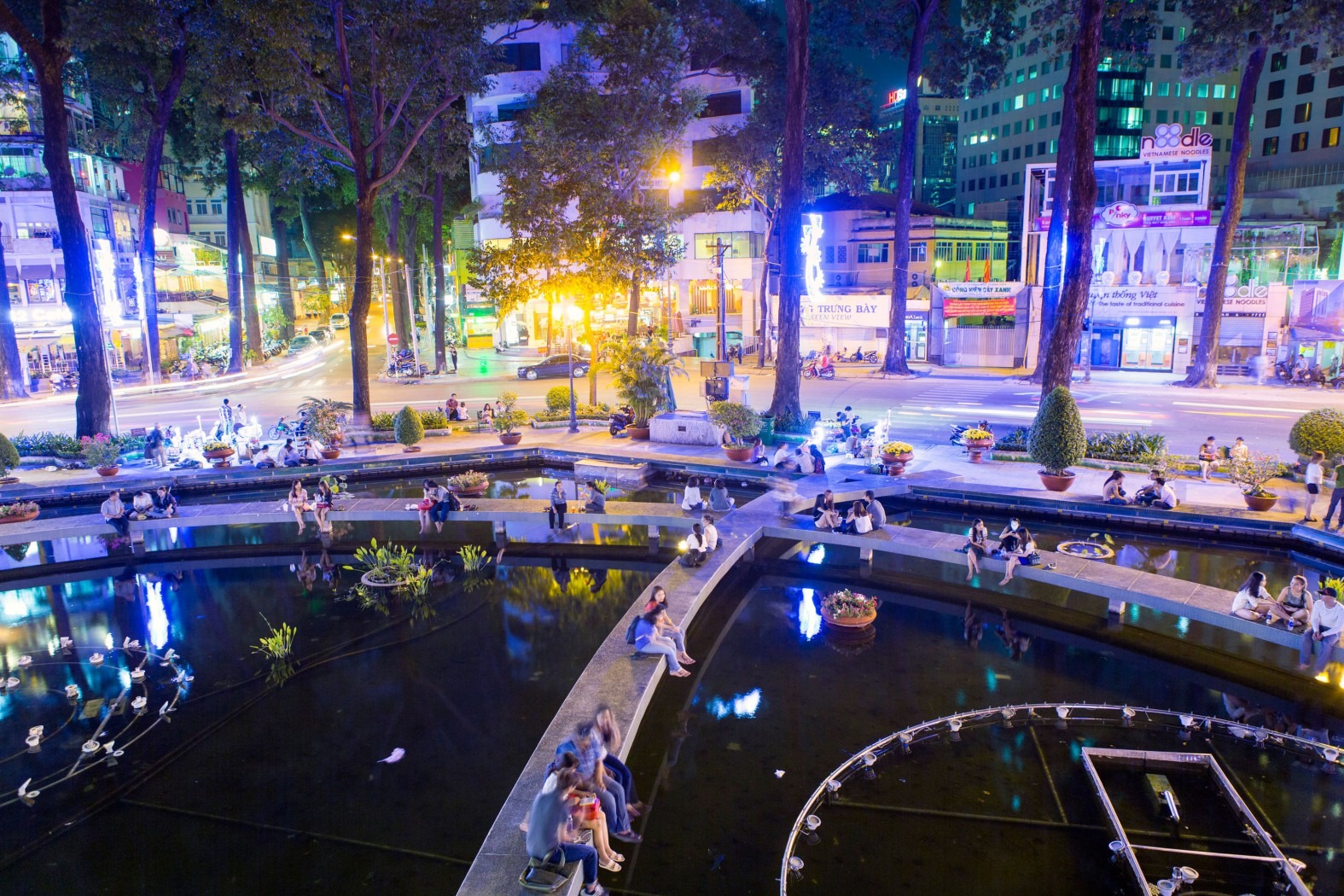
Turtle Lake in District 3, one of Saigon's most popular tourism places.
Photo by Shutterstocks/Tokin.
In May HCMC was ranked 18th out of 23 world's best street food cities in a listing by CNN alongside other Asian hotspots such as Hong Kong, Tokyo and Bangkok.
Vietnam’s iconic noodle soup pho, Vietnamese sandwich banh mi, and com tam (broken rice with grilled pork, pig skin, egg, and fish sauce) were named as some of its typical street dishes.
Banh mi, according to CNN, is becoming popular all over the world. The baguette can be filled with a selection of meats including pate, sausage and shredded pork skin. CNN also suggested visitors should visit Pham Ngu Lao Street, a place close to popular sites like Ben Thanh Market and the HCMC Fine Arts Museum to enjoy com tam with BBQ pork.
Phu Quoc Island
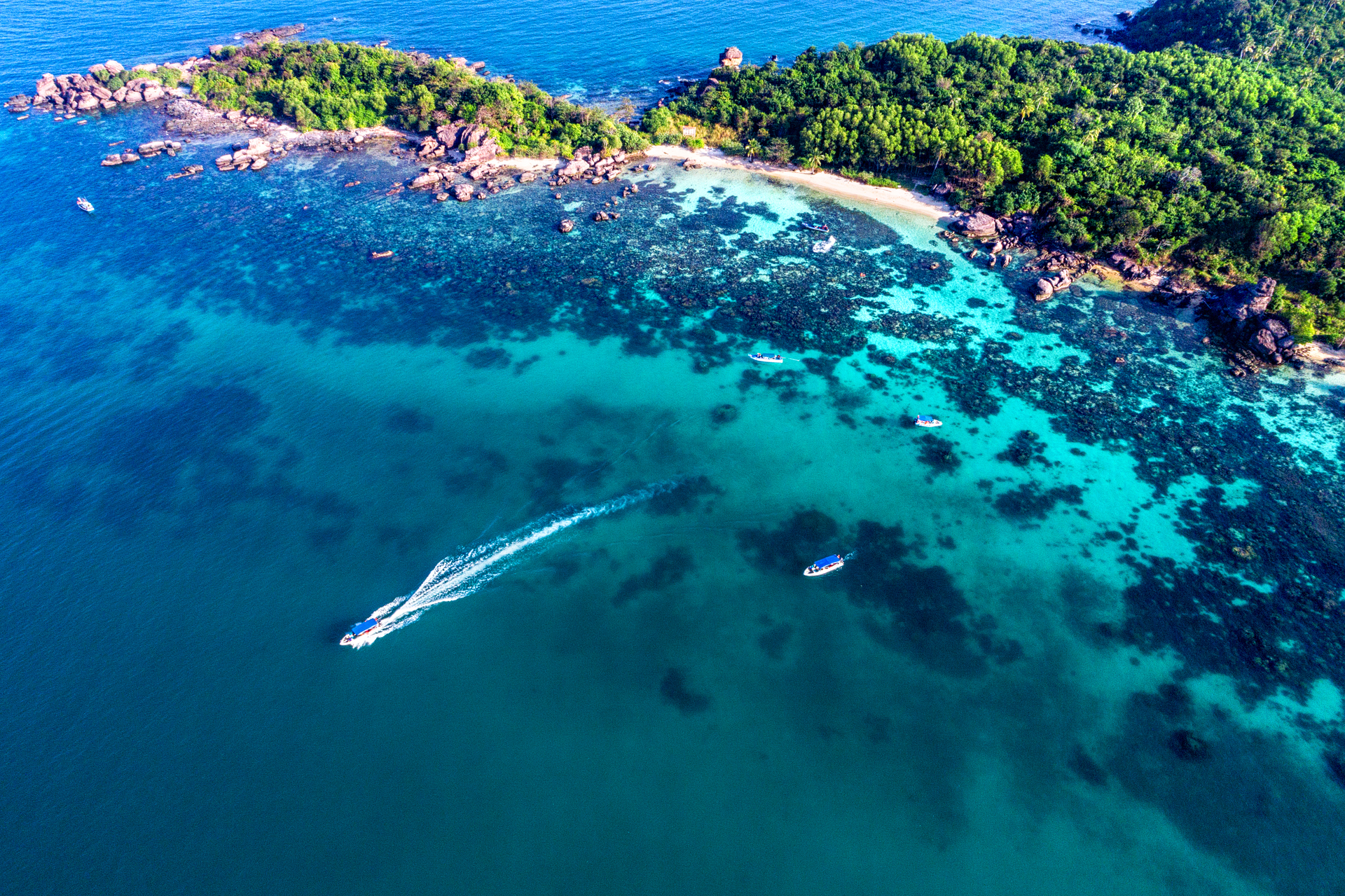
Phu Quoc Island is one of Vietnam's top beach destinations.
Photo by Shutterstock/Anh Anh.
In June Phu Quoc Island off the southern province of Kien Giang broke into the CNN list of most beautiful travel destinations in Asia.
A notorious prison island during French colonial times, Phu Quoc has gained worldwide popularity since it opened an international airport in 2012 and began offering a 30-day visa-free policy to foreigners in 2014.
Once a sleepy, low-key destination, it has become one of Asia’s most talked about destinations in the last couple of years, especially for luxury tourism.
Ruined church
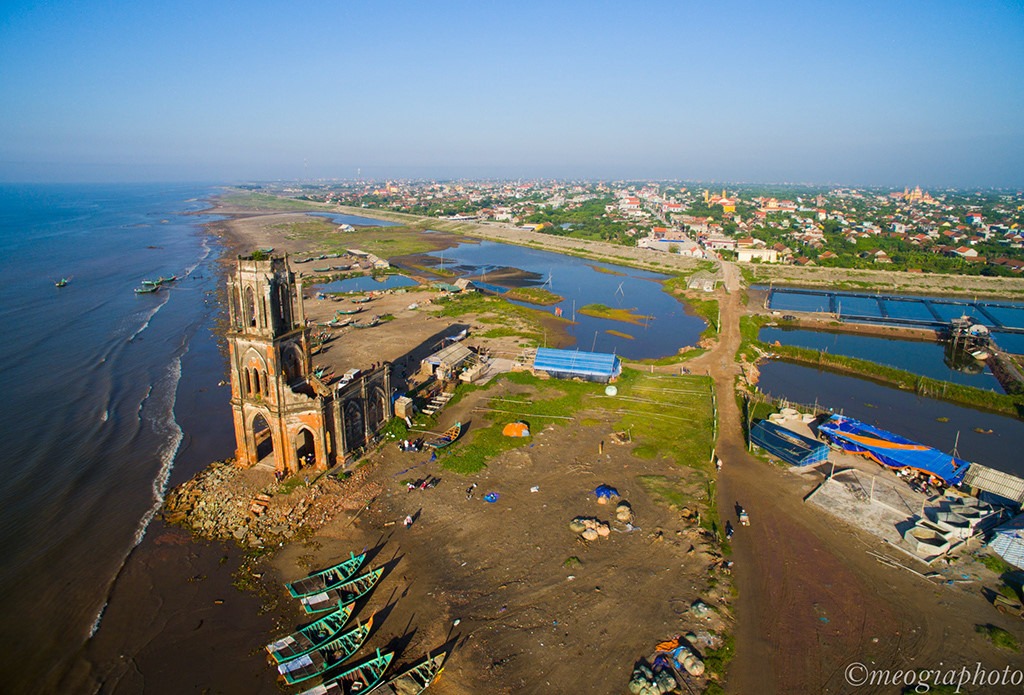
The ruined church in Nam Dinh Province is one of the most check-in
destinations for wedding photos. Photo by VnExpress/Meo Gia.
St. Maria Madalena Church, better known locally as the ‘Heart’ church, joined the CNN list of abandoned sacred places in July.
Situated on a beach in Hai Hau District in the northern Nam Dinh Province, the church was badly damaged by coastal erosion and has been abandoned since 1996.
It was built in 1943, and used to be a part of a complex of small and large churches, but after time and nature took their toll, it is the only one standing. The church is now a skeleton, with the inside damaged, and called ‘ruined’ church.
When the tide is in, the church goes under a meter of water. When the tide is out, it makes an ideal backdrop for wedding and souvenir photos.
My Son Sanctuary
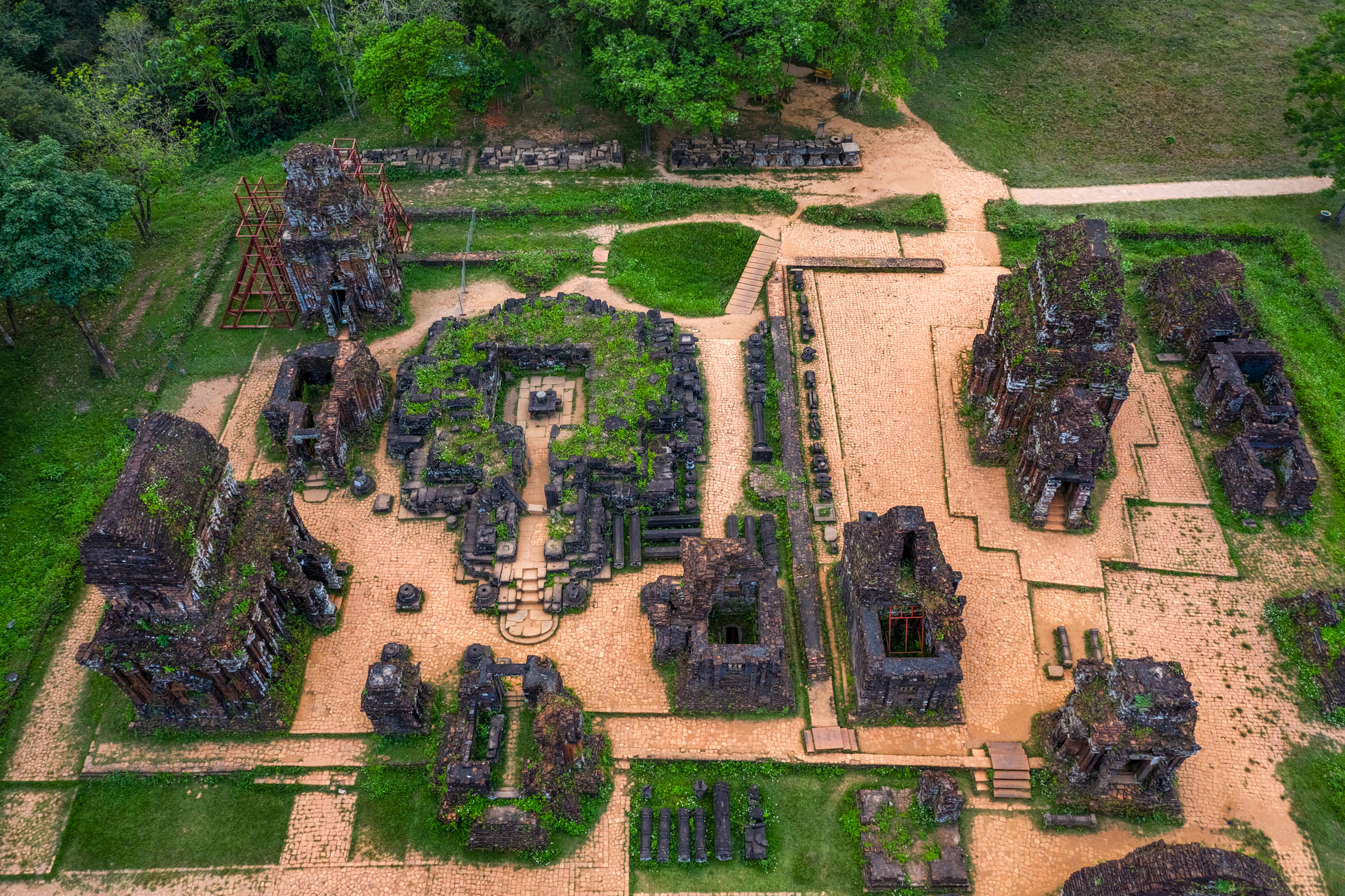
Sunrise at the My Son Sanctuary in Quang Nam Province,
a complex of abandoned and partly ruined Hindu temples.
Photo by Shutterstock/Huy Thoai.
The CNN list of abandoned sacred places also included UNESCO heritage site My Son Sanctuary in the central province of Quang Nam.
It is a complex of abandoned and partly ruined Hindu temples constructed between the 4th and 14th centuries by the Champa, a united kingdom of various groups of the ethnic Cham.
"Only 25 of 70 temples survive, the rest were destroyed by U.S. bombing during the Vietnam War," CNN says.
The My Son cluster is regarded one of the foremost Hindu temple complexes in Southeast Asia. It is often compared with other historical temple complexes in the region such as Borobudur in Java, Indonesia, Angkor Wat in Cambodia, Bagan in Myanmar, and Ayutthaya in Thailand.
Hanoi
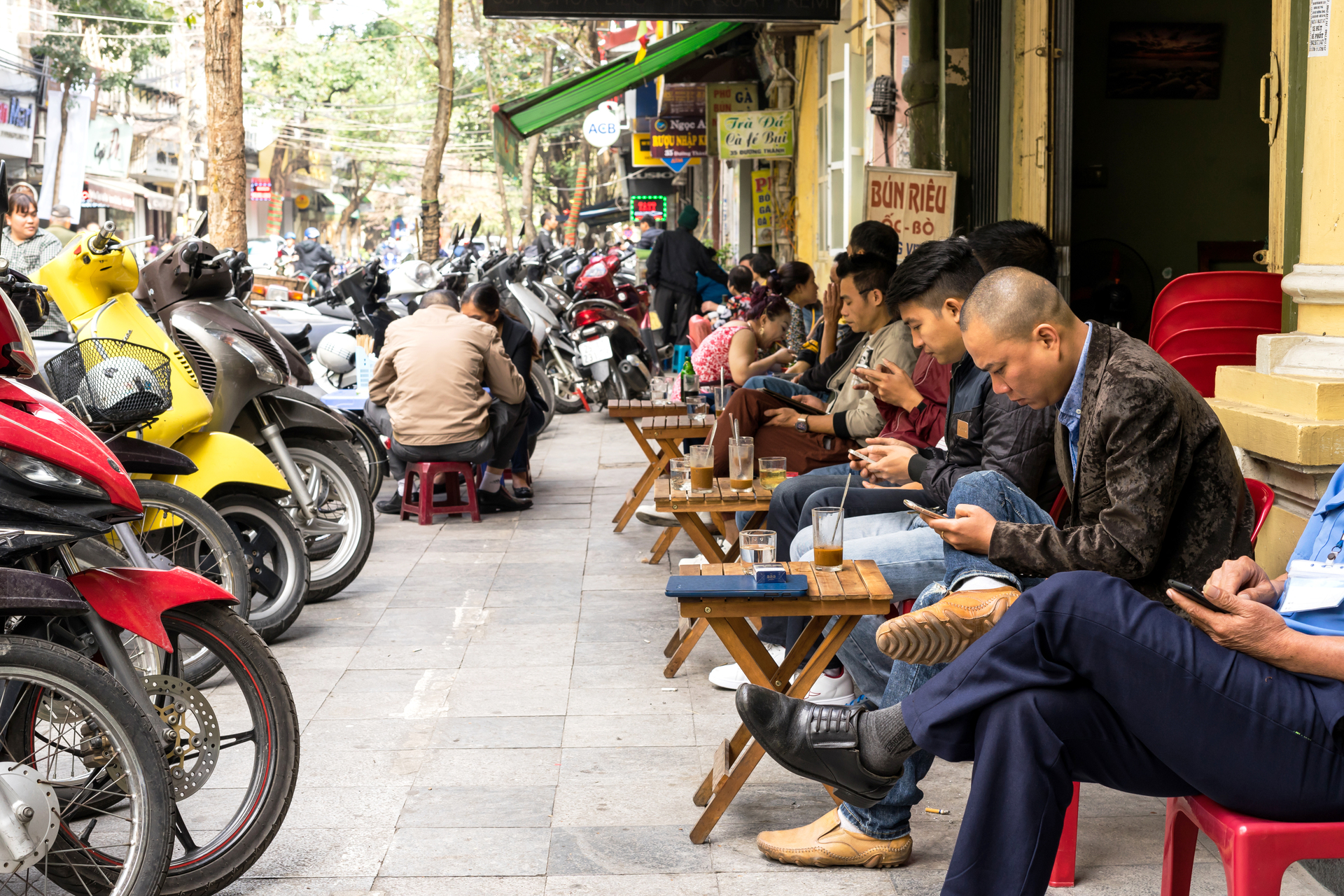
People drink coffee on a sidewalk in Hanoi's Old Quarter.
Photo by Shutterstock/Minh Tan.
In October CNN included Hanoi among must-visit places in the world to enjoy coffee. Black coffee, iced coffee with condensed milk and coconut coffee (frozen coconut milk mixed with rich black coffee topped with shaved coconut ice) are among Hanoians’ favorites, it says.
But egg coffee is truly a specialty of Hanoi and has made the capital’s reputation on the global culinary stage.
Café Giang makes one of the city's best egg coffees. It was invented by Giang, a bartender at the Metropole Hotel during the French colonial era. He took cappuccino and added whisked egg yolk to create the beverage, and gourmets around the world rave about it.
The drink starts with a layer of condensed milk at the bottom over which strong black coffee is poured. A whisked egg yolk is placed on top. The three elements create a fantastic mixture of sweet, bitter and fatty tastes.
Story by Nguyen Quy
By: Vnexpress
Source: https://e.vnexpress.net/projects/10-vietnamese-destinations-cnn-recommended-in-2019-4018738/index.html?vn_source=Folder&vn_campaign=Stream&vn_medium=Item-1&vn_term=Desktop
---------------------------------------------
Same category News :













